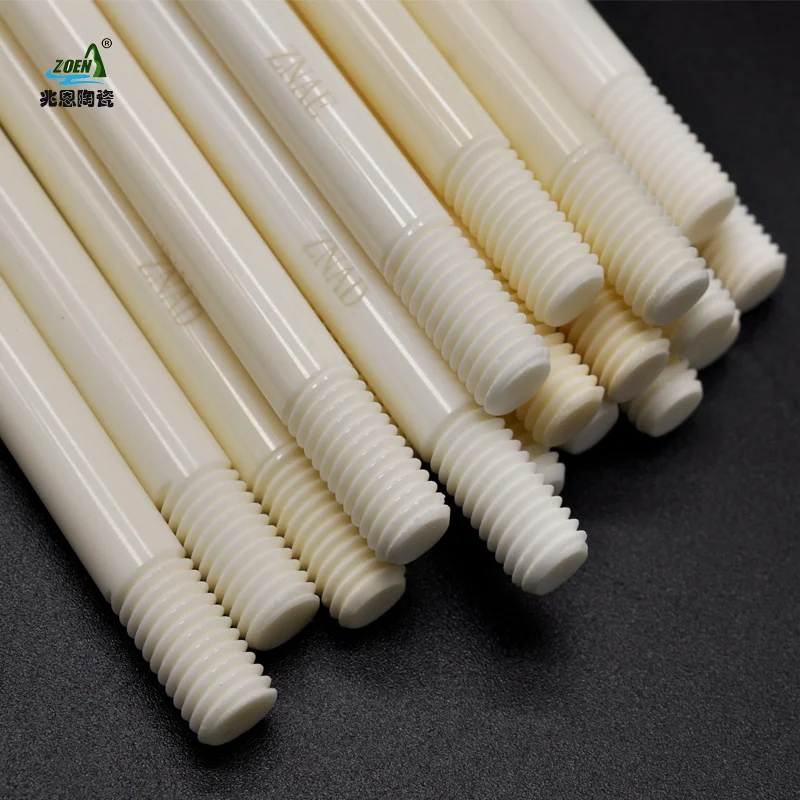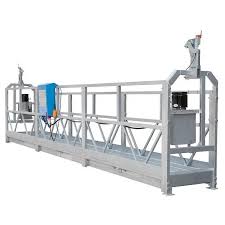In the world of advanced materials, alumina (Al2O3) ceramic stands out due to its remarkable properties and versatility. Zoen Precision Instrument, a leader in the field of high-performance materials, specializes in producing alumina ceramic threaded rods that harness the full potential of this incredible material. In this blog, we delve into the unique strengths of alumina ceramic and explore the diverse applications where these threaded rods are revolutionizing industries.

What is Alumina Ceramic?
Alumina, or aluminum oxide, is a white powder with a hexagonal crystal structure and a molecular weight of 101.96%. Known for its high hardness and stability under extreme conditions, alumina ceramic is a typical oxide ceramic. It is insoluble in water but can dissolve in inorganic acids and alkaline solutions. The most stable form of alumina, α-Al2O3, is utilized in engineering applications due to its excellent material properties, including a melting point of 2054°C and a boiling point of 2900°C. Its density ranges from 3.9 to 4.0 g/cm3, and it exhibits ionic properties at high temperatures.
The Strengths of Alumina Ceramic Threaded Rods
Alumina ceramic threaded rods from Zoen Precision Instrument boast several key properties that make them ideal for various demanding applications:
1. High Temperature Resistance
Alumina ceramic maintains its strength and stability up to its melting point, making it suitable for applications involving high temperatures where metal or plastic rods would fail.
2. Wear and Corrosion Resistance
These rods exhibit excellent wear resistance and do not corrode, making them ideal for use in harsh environments where they might be exposed to corrosive agents or abrasive materials.
3. Electrical Insulation
Alumina ceramic is an excellent insulator, even at high temperatures. This makes alumina ceramic threaded rods perfect for electrical and electronic applications, where they can serve as supportive or connective components without conducting electricity.
4. Mechanical Strength
Despite being a ceramic, alumina possesses significant mechanical strength and hardness, which is critical in applications requiring robust, durable materials that can withstand considerable mechanical stress.
Applications of Alumina Ceramic Threaded Rods
Alumina ceramic threaded rods are utilized across various sectors due to their unique properties. Some of the primary applications include:
1. High-Temperature Environments
These rods are used in furnaces, kilns, and reactors where high temperature is a constant. Their ability to withstand extreme heat without deforming or losing strength makes them indispensable in these settings.
2. Electrical and Electronic Industries
In the electrical sector, alumina ceramic rods are used where high insulation is required to prevent electrical discharges, including in insulators, substrates, and connectors within electronic devices.
3. Chemical Processing
The chemical resistance of alumina makes these rods suitable for chemical processing equipment where exposure to corrosive substances is common. They are used in pumps, filters, and reactors, where they contribute to the longevity and reliability of the systems.
4. Medical Devices
Due to their bioinert and clean properties, alumina ceramic rods find applications in various medical devices, particularly those requiring high precision and cleanliness.
5. Aerospace and Defense
In aerospace and defense, the lightweight and high-strength characteristics of alumina ceramic threaded rods are exploited in applications requiring materials that can withstand high thermal and mechanical stress.
Advantages Over Other Materials
When compared to metals, plastics, and other ceramics, alumina ceramic threaded rods offer a combination of high-temperature stability, electrical insulation, chemical resistance, and mechanical strength that is difficult to match. This makes them particularly valuable in innovative applications where traditional materials fail.
Conclusion
Zoen Precision Instrument’s alumina ceramic threaded rods represent a synthesis of material innovation and practical application. By providing a reliable alternative to more conventional materials, these rods help industries push the boundaries of what is possible, whether in high-temperature environments, electrical applications, or fields requiring high durability and strength. As technology progresses, the role of alumina ceramic in various industries is set to expand, offering new solutions to old challenges and paving the way for future advancements in material science.
zoen
wxam.assistant@marketingforce.com


